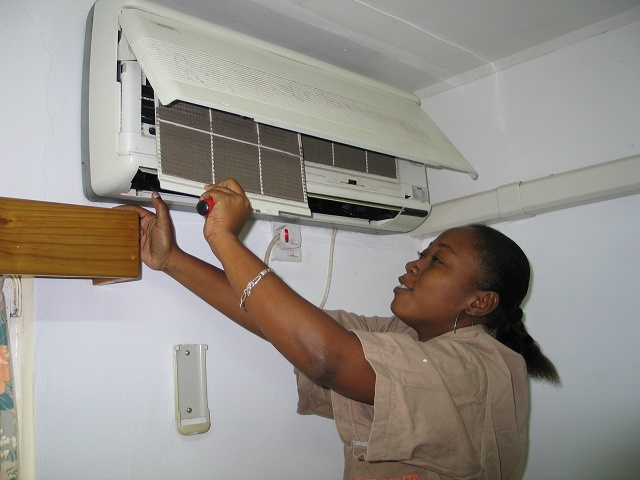Seychelles' environment ministry to survey imports of HFC gases ahead of 2025 quota system
(Seychelles News Agency) - Seychelles' environment ministry is undertaking a country-wide survey to quantify the yearly importation of refrigerating gases to prepare for the phase-down of hydrofluorocarbons (HFCs) in January 2025 as stipulated under the Kigali Schedule of the Montreal Protocol.
The survey, which started on February 15, will allow the ministry to identify key stakeholders using the HFCs to be phased down, making them priorities when a quota system for the allocation of HFCs kicks off in 2025. It will take about 120 days for the survey to be completed.
The senior ozone officer at the Ministry of Environment, Inese Chang-Waye, told reporters on Monday that Seychelles has a grace period between 2023 to 2024 to identify all its major stakeholders and know how much gas they use on a yearly basis.
"At the moment, we know which equipment and gas are coming into the country and the total that is coming in on a yearly basis. We have two major stakeholders and they represent the two major economic pillars - tourism and fisheries. We do not know how much of each gas they use per year," outlined Chang-Waye.
HFCs are widely used in refrigeration and air-conditioning. Despite the fact that HFCs are not ozone-depleting, they do contribute to global warming.
"A gas that is commonly used in refrigerators in Seychelles is R134A. When we calculate its GWP (Global Warming Potential) which is the equivalence to CO2, we see that they are really high. When compared to carbon dioxide, R134A has a GWP of 1430. Another one used in air-con units is R410A, and it has a GWP of 2088. We see the amount of global warming these gases can cause should they leak from this equipment," said Chang-Waye.
Major buildings such as those for government and private entities will also be targeted in the survey as well. Households will not be taken into account as HFCs for retail are controlled at the importer level.
"Once we know this information, we will be able to set them as priorities, and when the phase-down starts, the two sectors will be placed on the top list. Once we are able to identify how much of this gas is used by the sector each year, the maximum percentage will be allocated to that stakeholder," said Chang-Waye.
She further explained that those unable to make the change based on the status of their equipment or building structure will have an allocation priority. Contractors will be advised when planning new buildings which kind of gases they can bring in for the air-conditioning units to exclude them from the allocation.
Another factor that will need to be determined from the survey will be the rate of leakage.
"After the survey, there will be stakeholders' workshops, following which we will know which new legislation needs to be put in place or where we need to make amendments. In 2021, we made five amendments. From the survey, we will see if we will need to raise the levies of gases that have high GWP to discourage people from bringing them in or if there are levies that need to be removed from certain gases so as to encourage people to import them more. We have to see how much and which gases are being used in the sectors," said Chang-Waye.
Under the Kigali Amendment adopted in October 2016, countries are committed to cutting down on the production and consumption of HFCs over the next 30 years of the adoption.
According to the United Nations Treaty Collection, Seychelles accepted the Kigali Amendment to the Montreal Protocol on Substances That Deplete the Ozone Layer on August 20, 2019.
From 2025 to 2029, Seychelles will need to phase down about 10 percent of the total consumption of HFCs and by 2045 the percentage needs to be as high as 80 percent.






